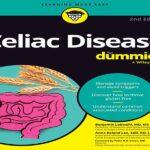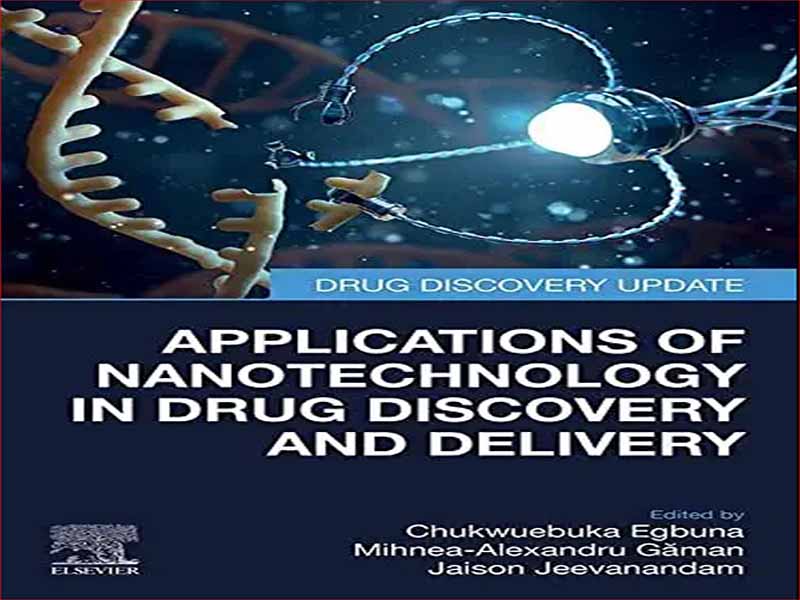- عنوان کتاب: Applications of Nanotechnology in Drug Discovery and Delivery
- نویسنده: Chukwuebuka-Egbuna,-Mihnea-Alexandru-Gaman
- حوزه: نانو دارو
- سال انتشار: 2022
- تعداد صفحه: 434
- زبان اصلی: انگلیسی
- نوع فایل: pdf
- حجم فایل: 9.76 مگابایت
ظهور فناوری نانو به عنوان یک پلتفرم، علم درمان بیمار را متحول کرده است. کاربردهای متعدد نانوتکنولوژی در کشف دارو، تحویل دارو و تشخیص، راه را برای راههای هیجانانگیز منتهی به پیشرفت تکنیکهای مرسوم هموار کرده است. نانوتکنولوژی شامل ایجاد و استفاده از مواد در ابعاد نانو (1_1000 نانومتر) است (شاه و همکاران، 2020). نانومواد به طور گسترده برای کاربردهای تشخیصی، درمانی و ترانوستیک مورد استفاده قرار گرفتهاند. داروهایی که در حال حاضر برای اختلالات مختلف از جمله سرطان، دیابت، بیماری آلزایمر و آرتریت در حال کشف و استفاده بالینی هستند، بر اساس فعالیتهای امیدوارکنندهشان در سیلیکو، آزمایشگاهی یا درون تنی سنتز میشوند. مهمترین دلیل شکست تعداد زیادی از داروها عدم وجود ویژگی های جذب، توزیع، متابولیسم و حذف بهینه (ADME) آنها است (گوپتا و همکاران، 2020). این به چالش های فراهمی زیستی شدید کمک می کند که به نوبه خود منجر به افزایش دوز و فرکانس دوز می شود. این امر تمایل به اثرات نامطلوب و سمیت را افزایش می دهد که منجر به شکست داروها در عمل می شود. علاوه بر این، عبور از موانع بیولوژیکی، مانند پوست، مخاط، و سد خونی مغزی (BBB)، توسط داروهای معمولی، به ندرت امکان پذیر است. بروز مقاومت در اختلالات مختلف مانند سرطان، میکروبی و عفونت ها، داربست دارو را بی اثر می کند و منجر به شکست کل دسته داروها می شود. پاسخ به این چالش ها با ظهور فناوری نانو نهفته است. نانوتکنولوژی شامل استفاده از نانوذراتی است که نه تنها هدفشان رسیدگی به مسائل ADME است، بلکه راهحلهایی برای دوز و فرکانس دوز بالاتر همراه با چالشهای فراهمی زیستی ارائه میکند. نانوذرات توانایی هدف قرار دادن اندامها، بافتها و سلولهای خاص را از طریق اصول عاملسازی سطحی دارند (Thorp et al., 2020). در 10 سال گذشته، حدود 40450 گزارش در مورد نانوذرات برای تحویل دارو به همراه 96 کارآزمایی بالینی منتشر شده است، در حالی که برای تشخیص، حدود 46233 گزارش همراه با 304 کارآزمایی بالینی منتشر شده است. طیف گسترده ای از نانوذرات در کشف دارو و تحویل دارو استفاده می شود. با این حال، هیچ دستورالعمل یا پروتکلی مبنی بر اینکه کدام نوع نانوذرات برای یک عملکرد خاص مناسب هستند وجود ندارد. این امر باعث پیدایش یک معضل حل نشده در بین محققان شده است. این سناریو نیاز به بررسی ویژگیهای هر نوع نانوذره را برای انتخاب مناسبترین انتخاب برای ویژگیهای مورد نظر نشان میدهد. هدف این فصل رفع ابهام بی پاسخ با تأکید بر ویژگی های نانوذراتی است که انتخاب نانوذرات را برای بهترین نقش آنها در کشف دارو و تحویل دارو با تلاش برای سرعت بخشیدن به ترجمه بالینی محصولات مبتنی بر فناوری نانو دیکته می کند.
The emergence of nanotechnology as a platform has revolutionized the science of patient therapy. Multifarious applications of nanotechnology in drug discovery, drug delivery, and diagnosis have paved the way for exciting avenues leading toward the advancement of conventional techniques. Nanotechnology involves the creation and utilization of materials in the nano dimensions (1_1000 nm) (Shah et al., 2020). Nanomaterials have been widely used for diagnostic, therapeutic, and theranostic applications. The drugs that are currently being discovered and clinically utilized for various disorders, including cancer, diabetes, Alzheimer’s disease, and arthritis, are synthesized on the basis of their promising in silico, in vitro, or in vivo activity. The foremost reason behind the failure of a large number of drugs is their lack of optimum absorption, distribution, metabolism, and elimination (ADME) characteristics (Gupta et al., 2020). This contributes to severe bioavailability challenges, which in turn lead to increases in the dose and dosing frequency. This further increases the propensity of adverse effects and toxicities, which lead to the failure of drugs in practice. Additionally, crossing biological barriers, such as the skin, mucosa, and blood-brain barrier (BBB), by conventional drugs, are rarely possible. The occurrence of resistance in various disorders, such as cancer, microbial and infections, renders the drug scaffold ineffective, leading to the failure of a whole class of drugs. The answer to these challenges lies with the advent of nanotechnology. Nanotechnology involves the utilization of nanoparticles which not only aim to address the ADME issues, but also provide solutions for a higher dose and dosing frequency along with bioavailability challenges. Nanoparticles have the ability to be targeted to specific organs, tissues, and cells via surface functionalization principles (Thorp et al., 2020). Within the last 10 years, about 40,450 reports have been published on nanoparticles for drug delivery, along with 96 clinical trials, while for diagnostics, about 46,233 reports have been published, along with 304 clinical trials. A wide variety of nanoparticles are used in drug discovery and drug delivery; however, there has been no guidance or protocols as to which type of nanoparticles are deemed fit for a specific function. This has caused the emergence of an unresolved dilemma amongst researchers. The scenario exhibits a need of investigating the characteristics of each and every type of nanoparticle to make the most appropriate choice for the desired attributes. This chapter aims to resolve the unanswered ambiguity by emphasizing the characteristics of the nanoparticles that dictate the choice of nanoparticles for their best-fit roles in drug discovery and drug delivery with an attempt to speed up the clinical translation of nanotechnology-based products.
این کتاب را میتوانید از لینک زیر بصورت رایگان دانلود کنید:
Download: Applications of Nanotechnology in Drug Discovery and Delivery



































نظرات کاربران